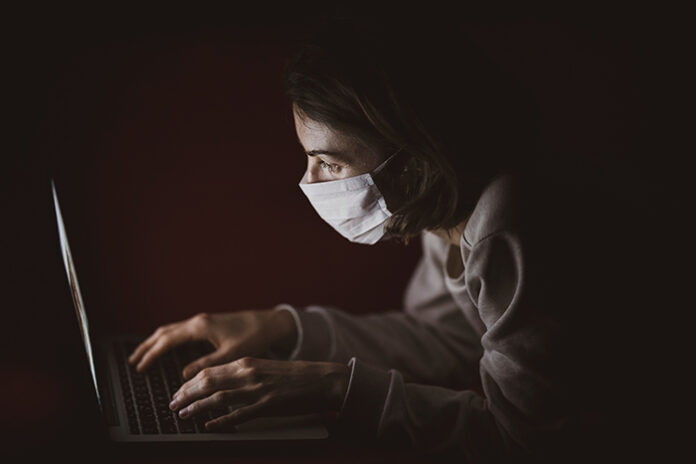The containment scheme based on ‘quarantine’ or ‘social distancing‘ has emerged as the main tool in fight against COVID-19. But, there are concerns about economic and psychological costs. A researcher offers ”social containment” as an alternative which seems to involve expanded ‘social network’ to include ‘relatives, friends and other non-essential people’ .But the expanded social network may put ‘some’ people at higher risk of mortality.
Some of the characteristics of COVID-19 that makes its containment difficult are the facts that the incubation period may be longer than 14 days (up to 28 days have been reported) and the people in the incubation period are contagious even though they have no symptoms. Therefore, with an aim to minimize contact among people within a reasonable time, a ”two-stage containment scheme” was proposed by Chow and Chow in their paper published on 30 March 2020 (1).
Under this scheme, the first stage involves dividing the containment area into blocks, and the blocks into units. Smaller the size of units better the control of spreading. The contact is only permitted within the units; contact with outside unit prohibited for 14 days. Screen and test within the units to identify infected cases and quarantine of the people in the units with infected cases for 14 days from the confirmation date. In the second stage, contact between different units within a block is allowed but not among different blocks for another 14 days.
The scheme requires two stages of 14 days each to minimise spread and seems to strikes a balance between quarantine and freedom. In the first stage, it permits contacts only within the units and in the second stage within the blocks.
This model based on ‘quarantine’ or ‘social distancing‘ has emerged as the main tool in fight against COVID-19 worldwide with reasonable results. For example, Wuhan is now limping towards normality and spread seems to be limited in India which is currently under total lockdown for a period of three weeks until mid-April. On the other hand, we see very high prevalence and mortality rates in countries like UK and USA who were late in enforcing restrictions on contacts with people. However, there have been concerns about economic and psychological costs associated with this model.
Social distancing could lead to heightened anxiety, depression and injury to self-worth because of its emphasis on ‘essential contact’ hence anthropologists, seem to offer ”social containment” as an alternative. Nicholas Long, in his recent paper analyses conceptual problems with ‘social distancing’ and argues in favour of ”social containment” which basically seems to involve ‘social network’ expanded from ‘natural household’ to ‘relatives, friends and other people’ as well despite being non-essential . This seems to offer a possibility of vibrant and varied social life with large amount of non-essential social contacts (2).
The ”social containment” model can work well for those with right genetic make up endowing natural immunity against COVID (such people are more likely to be in the same household comprising biological relations) but can pose serious threat to life to those without right genes offering natural immunity by enhancing the probability of contacting the virus.
Hypothetically, assuming there were absolutely no understanding of epidemiology and no medical facilities in place to protect population against outbreak of COVID-19, would the entire human race been wiped out ? The answer is no. The natural selection would have worked in favour of those with just right genetic make up endowing natural immunity against COVID. The negative selection pressure would have worked against those without right gene and this pandemic would have possibly wiped out such people. This is what happened to human population in the past till advancement in medical sciences started saving those people as well against whom natural selection would have worked otherwise.
Compared to Ebola, COVID-19 has much higher survival rate meaning large number of people may have genes endowing natural immunity. ‘Social distancing’ model seems to offer higher probability of survival to the ‘others’ who would otherwise not survive (given there is no vaccine or drug to treat the infection at this time).
The question is should the probability of survival of those against whom natural selection may work otherwise be enhanced by social distancing or should the focus be on minimising economic and psychological costs to the rest.
***
Reference:
1.Chow, W.K. and Chow, C.L., 2020. A Short Note on Containment Scheme against Spreading of Novel Coronavirus COVID-19. Open Journal of Biophysics, 2020, 10, 84-87. Published on 30 March 30, 2020. DOI: https://doi.org/10.4236/ojbiphy.2020.102007 .
2.Long, Nicholas J. ORCID: 0000-0002-4088-1661 (2020) From social distancing to social containment: reimagining sociality for the coronavirus pandemic. Medicine Anthropology Theory. ISSN 2405-691X (Submitted). LSE Research Online URL for this paper: http://eprints.lse.ac.uk/103801/
***




































